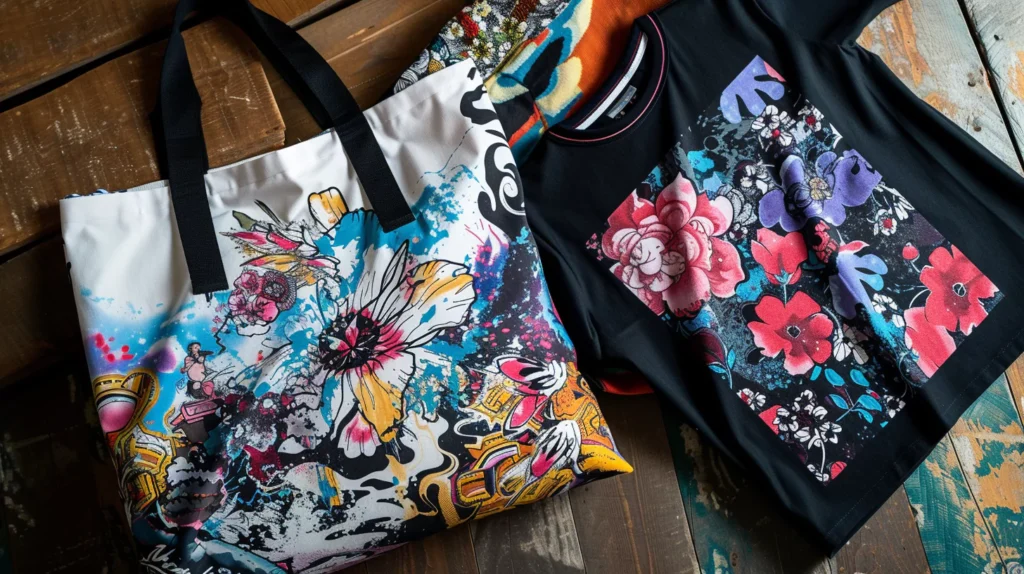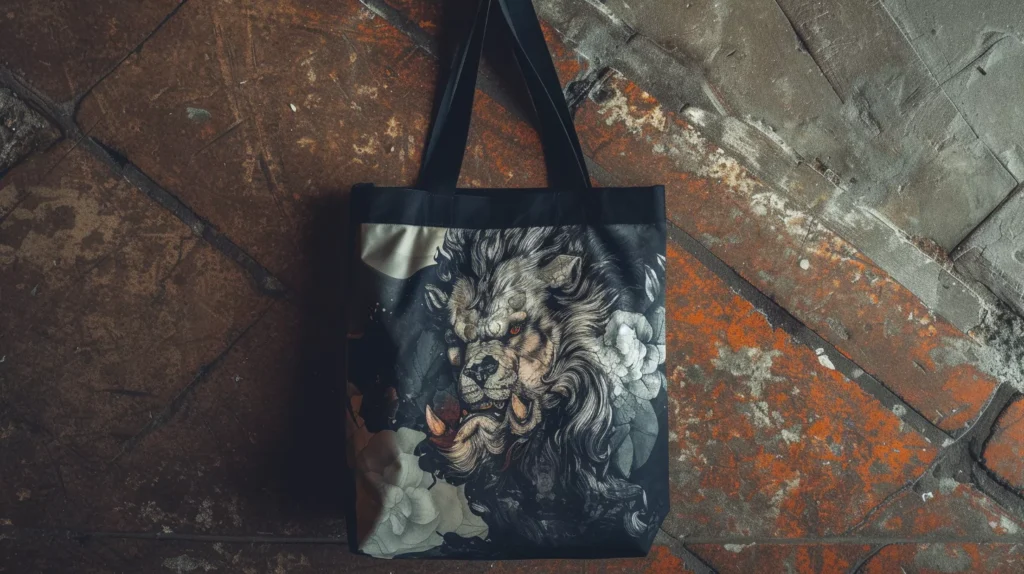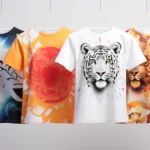Sublimation printing technology offers a versatile, high-quality way to generate full-color graphics on polyester fabrics and useful products. While the process works best on 100% polyester, many polyester blends can achieve great results as well.
Polyester blended fabrics, with proper considerations around content mix, preparation and pressing, can take colorful sublimated designs that pop and withstand the test of time.

How Sublimation Transfers Images Onto Fabric
First, let’s look at what sets sublimation printing apart from other decoration methods:
The sublimation process infuses fabric and substrates with printer ink by turning it into a gas through heat application. The printer ink turns to gas and permeates into the polyester fibers where it then solidifies, bonding the print color permanently into the fabric. The result is photographic, all-over prints that stretch and flex as normal fabric would while retaining the graphics crisply and permanently.
- No cracking like vinyl or plastisol transfers
- Won’t fade or bleed colors like inkjet printing
- Built to last for decades without peeling or fading
The other bonus: since the ink bonds at the polymeric level, it makes vibrant custom prints possible even on everyday items like ceramic mugs or metal phone cases.
For those needing quality, full-color prints – either for short-run custom fabric batches or profiting from consumers wanting their photos and art on useful goods – sublimation delivers professional results cost effectively.
Why Choose Sublimation Over Other Decor Methods?
Compared to screen printing, heat transfers, embroidery and direct-to-garment printing, sublimation stands out for:
✅ Photographic, all-over print quality – continuous tones
✅ No setup costs or minimum orders – great for prototypes or limited batches
✅ Soft-hand feel staying breathable and flexible
✅ Produces vibrant prints on fabrics, mugs, mousepads, metals, more
✅ Cost effective short runs – orders as low as 1 piece
✅ Can customize graphics with variable names or numbers
For businesses, events and groups wanting quality custom fabrics fast without a huge upfront investment, sublimation excels over tradition decoration options.
And for entrepreneurs, sublimation printing opens possibilities with low-quantity or made-to-order pattern prints consumers love for home decor, fashion or personalized merchandise.
Understanding Polyester Blend Limitations
The top fabric choice is always 100% polyester. However, many blended versions work beautifully.
- Poly-cotton blends of 50/50 to 65/35 mix well but some fading occurs over years for lighter colors
- Performance fabrics with nylon-poly blends provide excellent wicking Properties and hold prints nicely
- Spandex and rayon blends pose problems for sublimation so best avoided
Polyester Blend Fabric Considerations
Follow these content guidelines when selecting the optimal fabric for sublimation printing:
- 100% Polyester – Best choice for commercial printing with striking colors and perfect wash durability
- 95% Polyester or higher – Maintains bold graphics; minor fading possible over 5+ years
- 65% – 94% Polyester blends – Vibrant prints; average wash durability 3-5 years
- 50%/50% Poly-cotton – Economics option for short-term prints; colors won’t pop
- Less than 65% Polyester – Not recommended; print quality and longevity diminish
Aside from fabric content, these factors also impact sublimation print results:
- Pressing Temps & Time – Insufficient heat and dwell time adversely alters bonding (Check out our Sublimation Heat Press Settings and Temperature Charts for Flawless Results)
- Print File Setup – Failure to calibrate print files for fabric colors muddles hues
- Pre-treatment – Pre-washing and using dye trans achieves brighter ink infusion
Now let’s explore process specifics and recommendations when dealing with polyester blended fabrics.

Pressing Parameters
One vital step is properly heat-pressing the fabric to sublimate the dyes. This tables provides temperature and time guidelines:
| Fabric Mix | Temp | Time |
|---|---|---|
| 50/50 polycotton | 385°F | 50 sec |
| 60/40 to 80/20 blend | 390°F – 400°F | 40 – 60 sec |
| Performance Fabrics | Follow mfg guide | Varies |
General principles when pressing poly blends:
- Pre-press fabric to remove moisture and wrinkles
- Get a firm, consistent grip covering entire print area
- Use light to medium color shirts – darks won’t show colors
- Press for duration needed – timing is essential for dye infusion
- Allow to fully cool before peeling paper or repositioning
Controlling time, temp and pressure is crucial for enabling inks to sufficiently enter fabric polymers. Test samples also recommended before running bulk orders.
Image Design and Printing Tips
When creating print files and producing runs, utilize these best practices:
✅ Use bold fonts and visuals instead of fine text and details
✅ Boost color saturation compared to screen print equivalents
✅ Increase contrast slightly to compensate for dye dilution
✅ Eliminate borders or objects near edge perimeter
Dye diffusion differs across fabric types. Having an extra test print done gives the best assurance before committing to a full digital sublimated order.
Recommended Polyester Blend Sublimation Products
While sublimation works on 100% polyester, quality results also transfer onto these polyester blended fabrics:
| Item | Suitable Blends |
|---|---|
| T-shirts | 60/40, 65/35 polycotton |
| Performance Wear | Nylon-polyester mix |
| Sublimated Pillows | Poly-cotton decorator styles |
| Table Runners | 65/35 or above |
| Tote Bags | Microfiber or rugged poly-nylon |
Expanding beyond apparel, home decor and accessories provide many avenues to monetize sublimation printing. Manufacturing customized memorabilia also brings income potential.
And the list of consumer goods and promotional products supporting sublimation keeps growing. Phone covers, jewelry, puzzles, banners, blankets – all kinds of things people love to personalize and purchase!
Conclusion
With the right fabrics and preparation, wonderful customized prints and products become possible – even with polyester blended materials instead of 100% polyester.
Just ensure the material mix contains a high enough polyester ratio and account for print file adjustments to achieve awesome results. Sublimating poly blends opens doors for striking fashion pieces, decor items and creative merchandise consumers covet.




